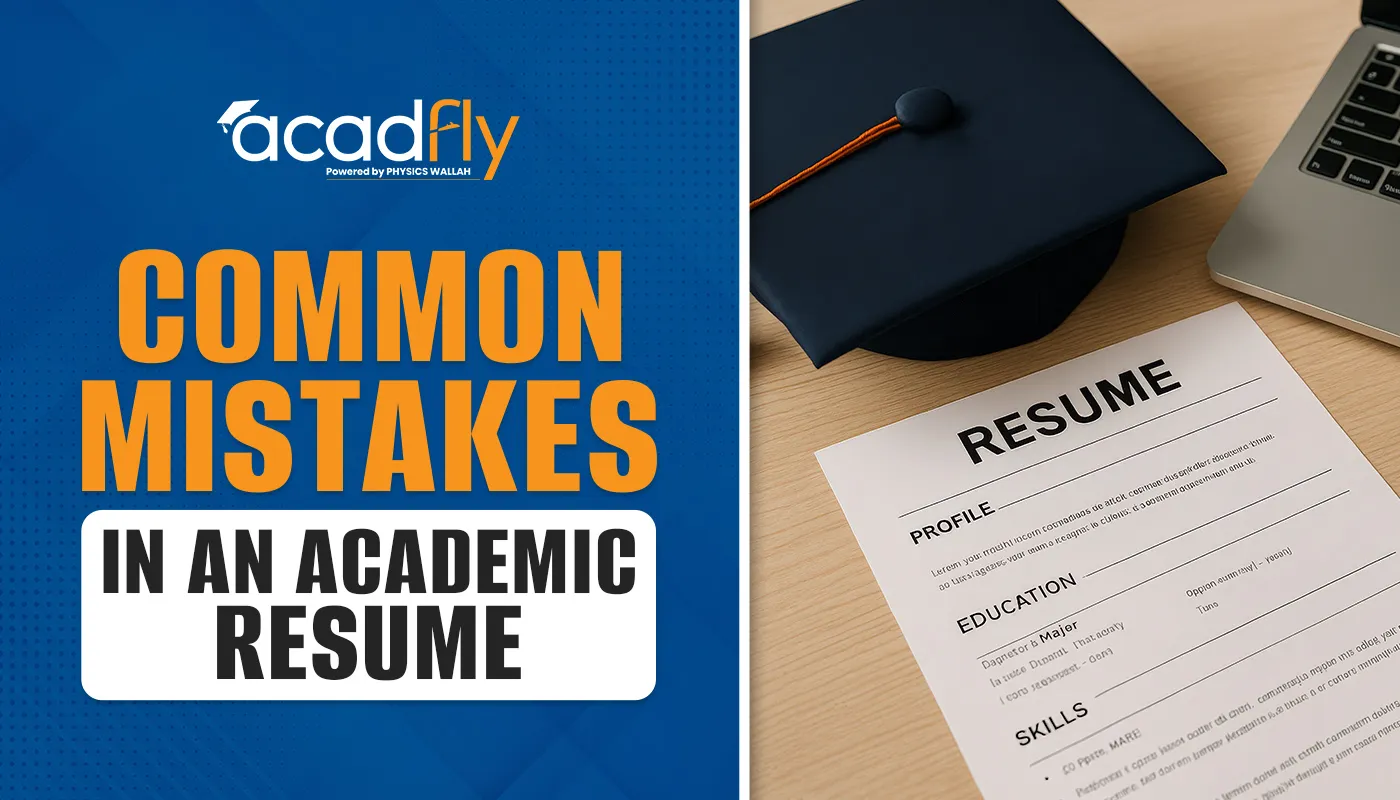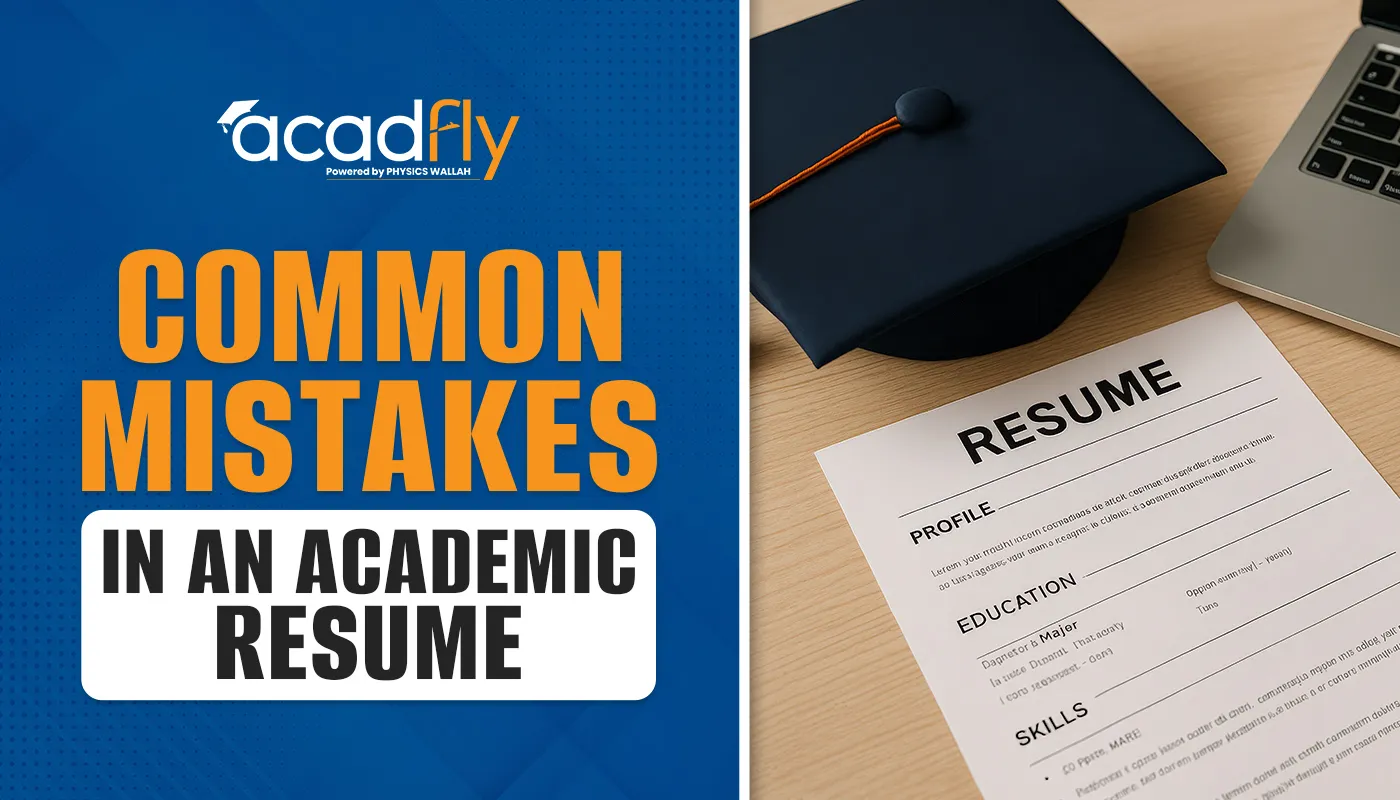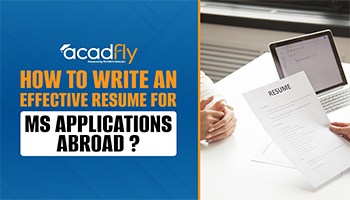


Common Mistakes in an Academic Resume is one of the major but sidelined lines of information that slips from our eyes, yet has a huge impact. Therefore, today we are here to cover some of the major yet common mistakes in an academic resume.
Not only do we highlight these mistakes, but we also discuss their impact and their solution. Therefore, crafting an effective resume will ensure clear communication of qualifications, experiences, and achievements. So keep following the provided details to avoid common mistakes in an academic resume.
9 Common Mistakes in an Academic Resume
The table below carries 9 of the common mistakes in an academic resume. It is these mistakes that reduce your chances of being selected into the academic field. Check the mistakes and the impact that they have.
| 9 Common Mistakes in an Academic Resume | ||
| Mistake | Description | Impact |
| Grammatical errors | Includes spelling mistakes, wrong punctuation, incorrect verb usage, and sentence structure. | Makes the resume appear unprofessional, reduces credibility, and may lead reviewers to question attention to detail. |
| Irrelevant information | Adding unrelated personal details such as hobbies, family background, or irrelevant jobs. | Distracts from academic achievements and skills, making it harder for reviewers to focus on qualifications relevant to the role. |
| Poor formatting | Use of inconsistent fonts, misaligned margins, uneven spacing, and mixed bullet styles. | Reduces readability and visual appeal, making it difficult for hiring committees or faculty to quickly scan important information. |
| Too lengthy | Including excessive details beyond 1–2 pages for students or 2–3 pages for experienced researchers. | Overwhelms reviewers, who may skip reading important sections, potentially causing key achievements to be missed. |
| Lack of specificity | Using vague phrases like “assisted in projects” or “worked on research” without quantifiable results. | Fails to convey real accomplishments, making it hard for reviewers to assess skills, contributions, or potential impact. |
| Outdated information | Listing old courses, obsolete skills, past experiences no longer relevant, or expired certifications. | Signals lack of resume updates, giving an impression of stagnation and reducing competitiveness for academic roles. |
| Missing keywords | Not including field-specific terminology, technical terms, or phrases relevant to the desired academic position. | Reduces chances of passing applicant tracking systems (ATS) or automated filters and may lower visibility to reviewers in specialized fields. |
| Weak structure | Sections appear in a random order without logical flow, such as listing work before education in student resumes. | Makes the resume confusing and difficult to navigate, reducing the likelihood that reviewers will quickly identify key strengths. |
| Overuse of jargon | Using complex technical terms, abbreviations, or acronyms without explanation. | Can confuse reviewers unfamiliar with the specific field, potentially masking accomplishments and reducing clarity of communication. |
Common Mistakes in an Academic Resume Examples
Examples of common mistakes provide clear guidance. By reviewing them, you can understand what to avoid in your own resume. These examples highlight typical pitfalls that applicants face.
| Common Mistakes in an Academic Resume Examples | ||
| Example Type | Incorrect | Correct |
| Objective Statement | "Looking for a challenging role." | "Aspiring Research Assistant with experience in molecular biology seeking to contribute to lab-based research." |
| Achievement | "Participated in workshops." | "Completed 3 workshops on Data Analysis using Python, applying skills in live projects." |
| Formatting | Mixed fonts and bullet styles | Consistent font size 11, single bullet style throughout |
Discuss the Key Elements of an Impressive Resume
A strong academic resume includes key elements. Each section should be structured, concise, and relevant to your academic goals. Proper organization improves readability and impact.
| Discuss the Key Elements of an Impressive Resume | |
| Element | Description |
| Contact Information | Includes full name, professional email address, phone number, and optionally LinkedIn or ORCID ID. Make sure it is current and professional. This ensures recruiters or faculty can reach you easily for further discussion or interviews. |
| Objective/Summary | A concise and targeted statement summarizing your academic and career goals. It should highlight your research interests, field of specialization, or intended contributions. Keep it specific to the position or program applied for. |
| Education | Lists all relevant degrees in reverse chronological order. Include institution names, locations, graduation dates, and GPA or percentage where applicable. Can also include relevant coursework, thesis titles, or dissertation topics. |
| Research & Projects | Provides detailed information about laboratory work, research projects, papers, or publications. Mention objectives, methodologies, outcomes, and your specific role or contribution. Highlight any collaborations or presentations at conferences. |
| Skills | Highlights technical and transferable skills relevant to academia. Include software proficiency, programming languages, lab techniques, analytical or statistical tools, and any other specialized skills that demonstrate capability in your field. |
| Work Experience | Covers academic internships, research assistant roles, teaching assistant positions, or relevant professional experiences. Include organization, duration, responsibilities, and notable achievements. Emphasize roles that support academic growth. |
| Certifications | List certifications, online courses, workshops, or training programs relevant to your academic or research field. Include issuing institution, date, and scope of the certification to demonstrate continuous learning and expertise. |
| Awards & Achievements | Details academic recognitions such as scholarships, merit awards, research grants, or notable accomplishments in conferences, competitions, or publications. This section showcases your excellence and commitment. |
| References | Includes 2–3 professional references who can vouch for your academic or research capabilities. Provide names, titles, affiliations, email addresses, and phone numbers. Ensure that references are informed and willing to provide recommendations. |
Common Mistakes in an Academic Resume FAQs
What are four common resume mistakes?
What are the common mistakes to avoid while preparing a resume?
What are some resume mistake checkers?
: Can a resume be too long for academic applications?
How can I make my resume stand out without mistakes?










